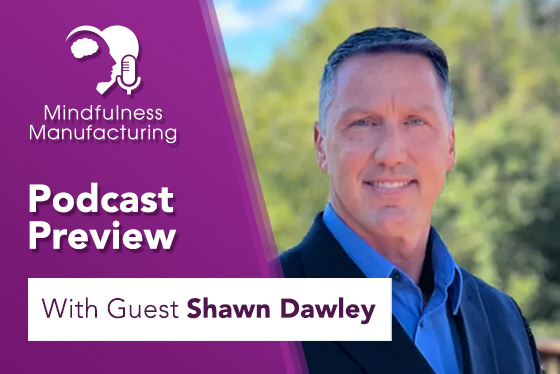The Balance Between Emotions and Intellect: Emotional Intelligence Insights from an Air Force Pilot
High emotions and tense situations can mean trouble—and no one understands this more than recent Mindfulness Manufacturing guest Shawn Dawley! Shawn is a former Air Force pilot and the president of OT2 Consulting, where he uses his lessons from his combat experience and the aviation industry to help leaders overcome challenges, inspire their teams, and find the balance between emotions and intellect.
While manufacturing might not have as many literal life-or-death situations as the Air Force, Shawn’s lessons on emotional intelligence (and more!) are important reminders for all leaders.
Lesson #1: The Danger of a Hostile Environment
Have you ever been in a situation when you encountered a team member who was in a bad or downright hostile mood? How did you react? Most likely, you steered clear or avoided them until their mood improved. This is a natural reaction, but it can mean big problems for your entire organization, especially when one person’s negative mood causes others to avoid voicing feedback or expressing concerns. If a team feels like they can’t express their opinions or point out problems, it can lead to decreased morale, stalled productivity, and an increase in preventable delays or mistakes.
Lessons #2: The Impact of High Emotions
Anger and frustration aren’t the only options that can cause problems! In his podcast, Shawn stresses the importance of all emotions. While you might have trouble with decision-making when you’re angry or stressed-out, it can be equally difficult to make decisions when you’re excited or euphoric. Whenever you’re at “your emotional worst,” it can impact the way you make decisions and interact with your team.
Lesson #3: Know Your Emotional Triggers
To avoid getting caught up in your high emotions, think about your emotional triggers. What causes you to get upset or frustrated? Do certain situations cause you to react in specific or negative ways? Spend some time thinking about past experiences, how you reacted, and what you could have done differently. By learning your own emotional triggers, you can take proactive steps toward controlling how you react in high-emotion situations. Everyone has emotional triggers, but how you react to them is what sets you apart.
Lesson #4: To Understanding Others, Form Relationships
Along with understanding your own emotions, it’s important to understand the emotions and reactions of others on your team. To understand how and why your team members react in certain ways, spend some time getting to know them. In particular, be curious about their past experiences. This can help you discover new insights into their behavior and emotions. For example, you might learn that someone reacts negatively to feedback because of their history with a strict parent or a short-tempered former boss. Once you know the triggers behind someone’s emotional responses, you can work with them to find the best ways to move forward.
Learn More on the Podcast
To hear more of Shawn’s unique stories and lessons from his time in the Air Force, listen to his podcast here.
At Manufacturing Greatness, Trevor Blondeel works with manufacturers to connect the top to the shop floor. If you’re ready to improve your own organization, contact Trevor to learn how Manufacturing Greatness can help you build stronger leaders and develop a dynamic, high-performing workplace.

